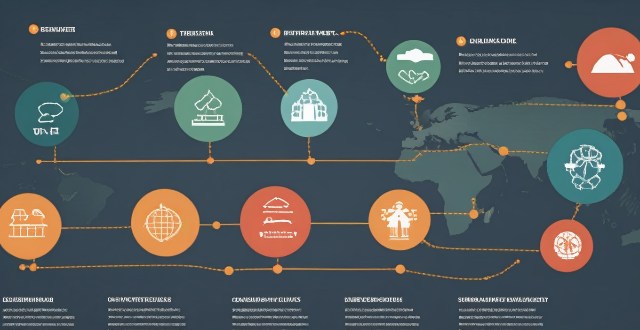The Task Force on Climate-related Financial Disclosures (TCFD) and the Global Reporting Initiative (GRI) are two global sustainability reporting frameworks that share several key points of alignment. Both provide guidelines for companies to report on their sustainability performance, with TCFD focusing specifically on climate-related financial disclosures and GRI covering a broader range of sustainability issues. They also emphasize the importance of materiality assessment, stakeholder engagement, risk management, and climate change disclosures in determining which aspects are most relevant to an organization's business model and strategy. By following both frameworks, companies can provide a more comprehensive picture of their sustainability performance and demonstrate their commitment to addressing climate change and other sustainability issues.

Alignment of TCFD with Global Reporting Initiatives like GRI
The Task Force on Climate-related Financial Disclosures (TCFD) is a global initiative that aims to provide a framework for companies to disclose information about their risks and opportunities related to climate change. The Global Reporting Initiative (GRI), on the other hand, is a widely used sustainability reporting framework that provides guidelines for organizations to report on their economic, environmental, and social performance.
Key Points of Alignment between TCFD and GRI
1. Reporting Guidelines
Both TCFD and GRI provide guidelines for companies to report on their sustainability performance. While TCFD focuses specifically on climate-related financial disclosures, GRI covers a broader range of sustainability issues, including economic, environmental, and social aspects.
2. Materiality and Stakeholder Engagement
TCFD emphasizes the importance of materiality assessment and stakeholder engagement in determining which climate-related risks and opportunities are most relevant to an organization's business model and strategy. Similarly, GRI also requires organizations to identify material aspects based on stakeholder interests and impacts on economic, environmental, and social performance.
3. Risk Management and Opportunities
TCFD requires companies to disclose information about their risks and opportunities related to climate change, including transition and physical risks. GRI also encourages organizations to report on their risk management strategies and how they address potential negative impacts on economic, environmental, and social performance.
4. Climate Change Disclosures
While TCFD specifically focuses on climate-related financial disclosures, GRI also includes climate change as one of its key performance indicators under the environmental category. This means that companies following both frameworks will need to disclose information about their greenhouse gas emissions, energy consumption, and other climate-related metrics.
5. Integration with Other Reporting Standards
Both TCFD and GRI can be integrated with other reporting standards such as the International Financial Reporting Standards (IFRS) and the Sustainability Accounting Standards Board (SASB). This allows companies to provide a more comprehensive picture of their sustainability performance by combining different frameworks and standards.
Conclusion
In conclusion, while TCFD and GRI have different focus areas, they share several key points of alignment in terms of reporting guidelines, materiality assessment, risk management, climate change disclosures, and integration with other reporting standards. By following both frameworks, companies can provide a more comprehensive picture of their sustainability performance and demonstrate their commitment to addressing climate change and other sustainability issues.